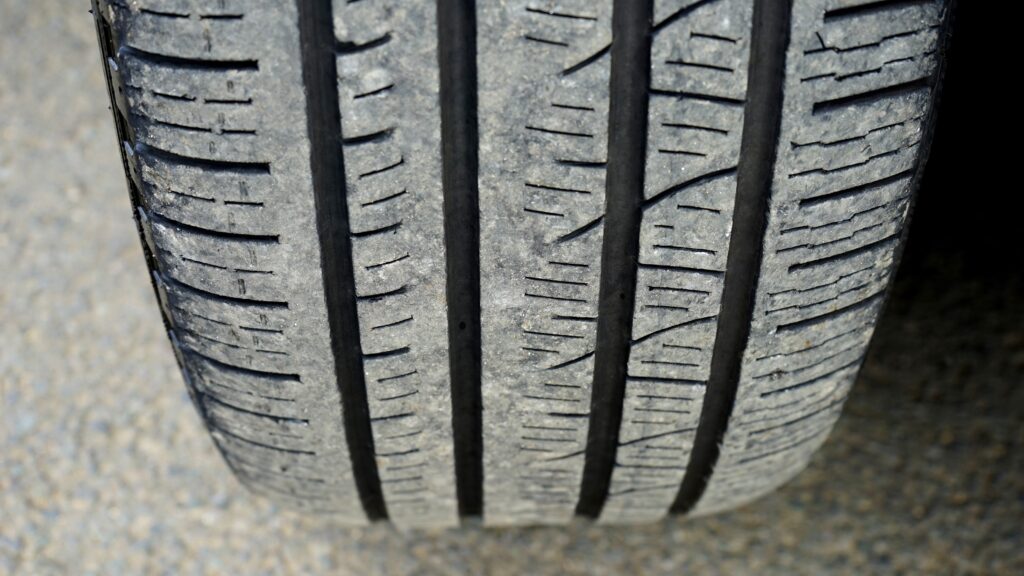Tires are an important component of your cars when it comes to safety on the road. They allow your car to grip the road and not slide around in different weather conditions.
Checking the tread of the tires should be an import item on your regular maintenance checklist. It’s import to replace them when the tread starts to wear down of if you start to notice the cracks in the tires.
You can easily measure the tire tread using a coin or a tire trad measuring tool. But what’s not easy to check are the tire cracks. You will need to rotate and inspect the tire on all sides.
There are a lot of reasons why tires can start cracking but one of the important causes is insidious rot. Your car tires start with small cracks and those turn into bigger ones with time.
In this article we are going to look at how to identify tire cracks and various ways to fix them if possible. We’ll also give you tips and tricks to determine if tires need replacing.
Are Cracked tires bad?
Whether the cracks are safe or unsafe depends on the size of the cracks. Small minor cracks that are only at the surface are totally fine. Those are quite common and it’s safe to continue driving with them.
You want to pay attention to the cracks and see if they increase in length and size over time. If you see them getting bigger and becoming deeper, it’s time to replace the tire. These bigger cracks, if not taken care of at the right time, can cause your tires to blow out.
It’s important to note that if your tire is only a year or so old, it should not have that many cracks. If you notice the cracking on new tires, you may want to check with the manufacturer to see if that can be replaced. Often time these cracks on the new tires indicate a major manufacturing defect.
Also, did you know that the tires have an expiry date? Generally the tires are good for about six years from the date they were manufacture. Check out this article to find out the expiry date of your tires.
How do Tires crack?
There are a number of reasons why tires crack; exposure to UV light, oils, chemicals, elements on the road and exposure to harsh environments. Exposure to UV light and harsh environment cause the tire rubber to break down over time. The tires loses its flexibility and starts to crack up. Cracks start small and then they continue to grow over time before you have to replace them.
Cracks in the tire sidewall are very common and there’s no way to avoid them. Those are usually fine for driving.
However, when the cracks start appearing in the tire tread, that’s when you need to pay attention. This could be an early sign of tire rot and if not looked after immediately, it could cause the tread to come off the tire. When this happens while driving, you may easily loose control over the car and put yourself and other drivers on the road in danger.
signs of a tire about to crack

It’s important to note that tires don’t start to crack immediately. It’s a process that takes place over a period of time.
In the very early stages or tire rotting, it’s hard to tell if the tire cracking has started just by inspecting the tire all around.
It’s therefore important to always take preventative care even when you think the tire is healthy and in good shape. This is the only way to stop or slow down tire rotting at an early stage.
So, what are some of the obvious signs of a cracked tire?
- When you inspect the tire from all sides, you will notice small cracks (especially on the sides of the tires). Check these from time to time to see if they grow in size/length.
- It’s also a good idea to feel the tire rubber when inspecting. If you notice brittle and dry rubber, pay close attention to that part over time to see if any cracks develop. Brittle and dry area are more prone to cracking.
- If you notice the tire is peeling, that’s another sign that the condition of the tires is degrading.
Different Ways of preventing tire cracking
You can extend the life of your car tires by actioning the following maintenance tasks. These are just some of the ways you can extend the life of your car tires. Performing these action don’t take a lot of time and the reward is total worth it. You can delay spending hundreds of dollars on the tire replacement.
- Keep them away from the UV light – whenever possible, try to avoid exposure to sunlight (UV rays). When the car is not being used, try to park it in the garage or under the shade.
- Don’t park your car in area with standing water. Your car tires should stay on the dry part of the road as much as possible.
- During winters, try to keep the snow off the tires as much as possible.
- If you have travelled on dirt/mud roads, clean the tires after driving and make sure there is no mud on the tires.
- Keep the tires inflated properly. Check the placard which is located on the driver door frame. It lists the correct pressure for your car’s tires. Keeping the tires inflated at the correct pressure has a lot of benefits. It helps you save fuel and also helps prevent unwanted strain on the tires (which leads to more cracking).
- Don’t let you car sit idle for too long. The tire rubber becomes brittle and crack prone.
Now that you know tire cracks are and how they form, you are in a better position to determine if they need replacing for your safety. If you are ever unsure of the conditions of the tires, please feel free to ask your mechanic at your scheduled visit. They will be happy to advise you of the condition and let you know if they need to replaced immediately or not.

